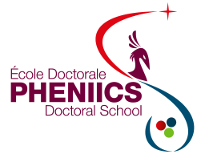Orateur
Mlle
Tiffany BEAUMONT
(IRSN)
Description
*In vivo* counting is a monitoring method used to estimate the incorporation of radionuclides from spectrometric measurements. In practice, the calibration is performed using physical phantoms which are currently limited as compared with the human anatomy. Many researches are focused on the development of realistic calibrations using numerical phantoms and Monte Carlo simulations. Nowadays, the development of 3D printing makes it possible to design realistic calibration phantoms to improve measurements.
In case of nuclear accident, all iodine’s isotopes are released into the atmosphere and are naturally retained in the thyroid. The exposed population risks developing thyroid cancer and this risk is greater for children, because of their higher radiosensitivity. Several incidents have shown the difficulty of interpreting thyroid measurements in children. Indeed, because there is no thyroid phantom adapted for children, the calibration is currently carried out with an adult thyroid phantom.
To obtain a better estimate of children health risk, thyroid anthropomorphic phantoms were designed for different ages (5, 10, 15, and adult man), using a CAD (computer aided design) software.
Necks, vertebrae, spinal cords and tracheas were also designed according to age and put together to create the final phantoms. An important part of the work was to optimize the manufacturing of the insert, particularly to mimic a realistic attenuation of radiation and to ensure the waterproofness and robustness over time. Ultimately the thyroid phantoms were filled with radioactive solution (133Ba) and sealed.
Counting efficiencies for all phantoms, in contact with the detector were measured: a 25% difference between the 5 years old child and the adult was observed. The comparison of the counting efficiencies between the IRSN reference phantom and the developed adult phantom showed a mean difference of about 7%. The developed phantoms were thus validated and patented (FR1650855).
Then, a systematic study should be conducted to define the most appropriate protocol for measuring children thyroid in post-accident situation. These phantoms will also be used in nuclear medicine to improve the dose assessments and to personalize the injected activity.
Auteur principal
Mlle
Tiffany BEAUMONT
(IRSN)
Co-auteurs
Dr
David BROGGIO
(IRSN)
Dr
Didier FRANCK
(IRSN)



